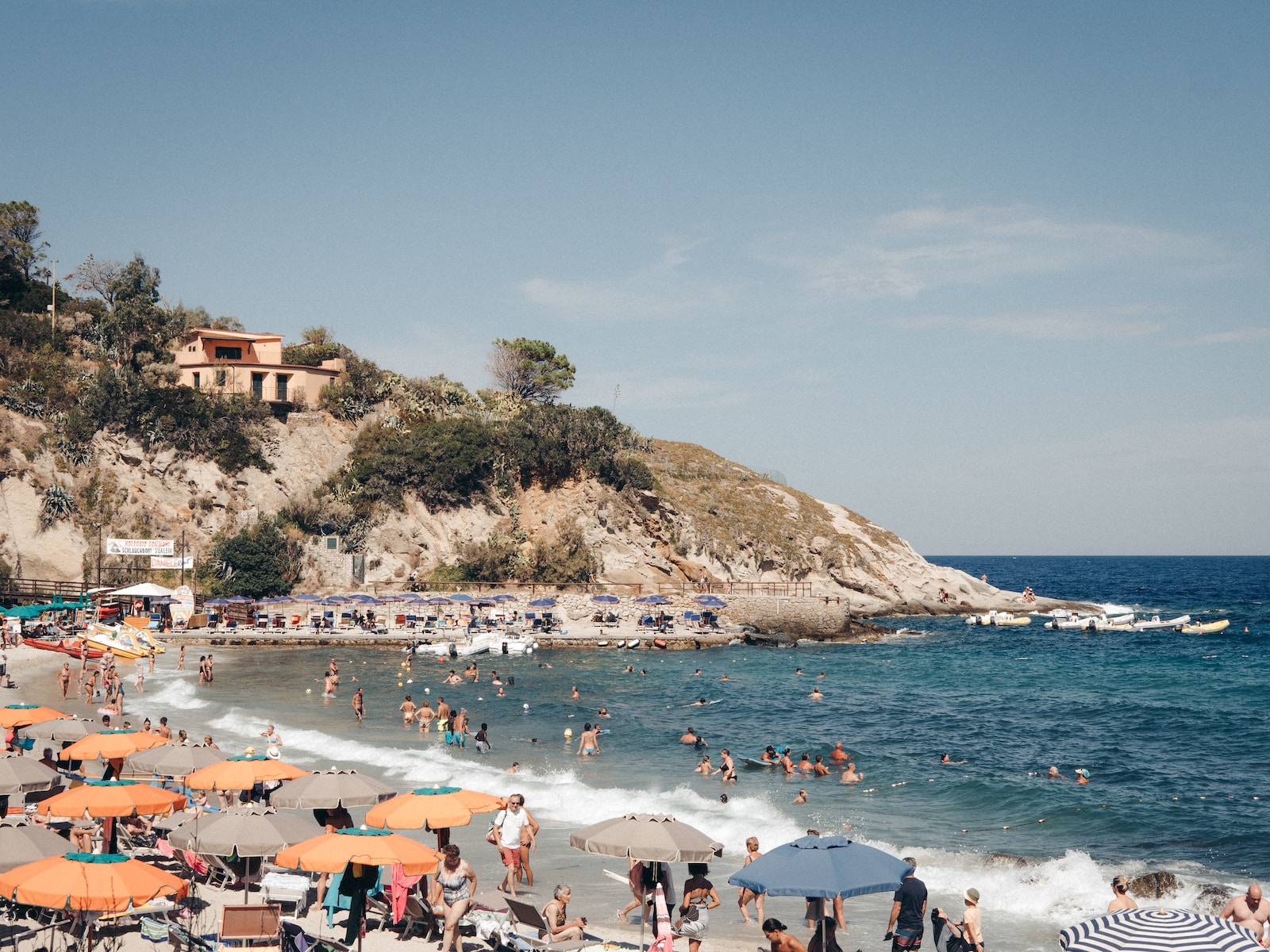Visiting Elba
Tucked away off the coast of Tuscany lies the island gem of Elba. This Mediterranean island offers stunning natural scenery, rich history, and an idyllic charm that makes it a perfect Italian getaway. With its crystal blue waters, dramatic cliffs, and quaint seaside villages, Elba encapsulates all the beauty of an Italian island escape.
Geography

Elba is the largest island in the Tuscan Archipelago, located around 10 km from the mainland port of Piombino. It has an irregular shape spanning 223 square km, made up of a mountainous terrain that rises and falls from the coastline. The highest point is Mount Capanne at 1,018 meters above sea level. The island enjoys a typically Mediterranean climate, with warm dry summers and mild winters.
History
Elba has been inhabited since the Iron Age and has a long history peppered by different rulers from the Etruscans to the Romans. But the island is most famed for its brief stint as the exiled home of Napoleon Bonaparte between 1814-1815. During his 300-day reign, Napoleon introduced reforms and infrastructure still visible today. Other legacies that shape the island include its mining industry, fortresses, and coastal towers used to defend against pirates in centuries past.
Where is Elba in Tuscany?
Elba is located in the Tyrrhenian Sea, around 10 km from the western coast of central Italy, just south of Livorno. It’s part of the Tuscan Archipelago and the province of Livorno, positioned between the Italian mainland and the island of Corsica.
First Impression of Elba
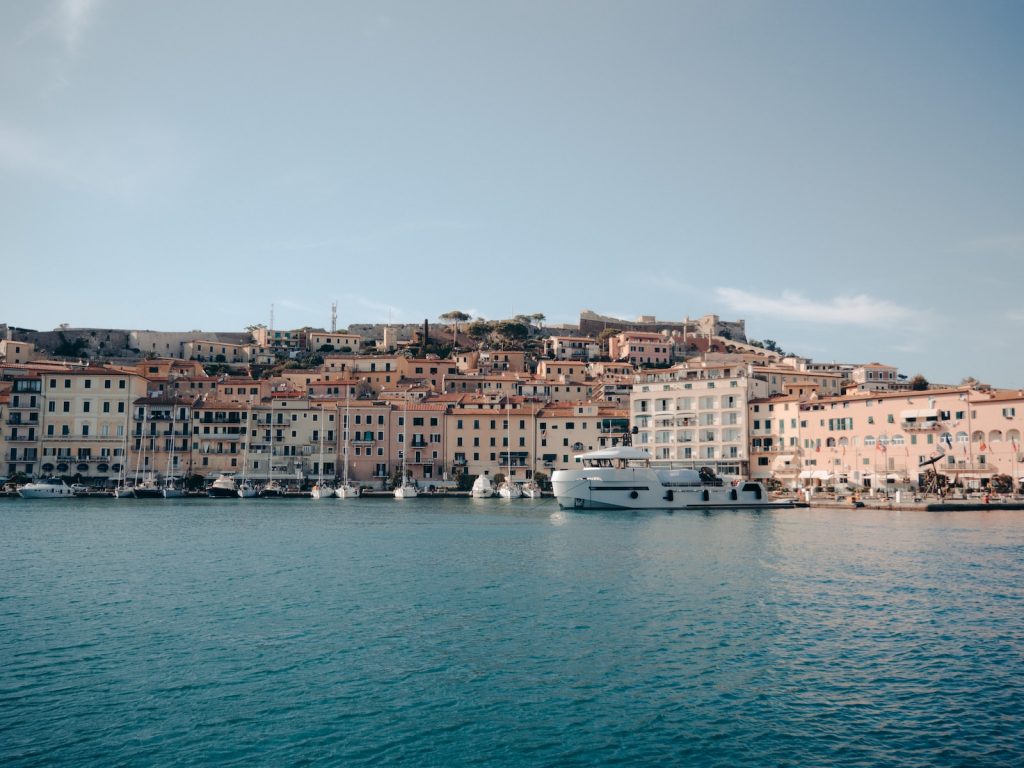
Your First View of Elba
Approaching Elba by ferry, the first glimpse is the northwestern coastline with its beaches, villages, and the capital city of Portoferraio perched on a promontory. The port comes alive as passengers disembark with the anticipation of exploring this new island discovery. The harbor front is lined with restaurants and cafés, typical of laidback island life.
Portoferraio
As the island’s largest city, Portoferraio makes an excellent base to begin your island adventures. Take a stroll along the historic center to view Medicean fortresses and Napoleonic residences that characterize the waterfront. The two imposing fortresses – the Medici Fortress and Fort Falcone – act as protective sentinels from high up on the hills. The Old Town charm continues along narrow alleyways through an atmospheric mix of shops, cafes, and trattorias.
Don’t miss the picturesque Marina di Darsena with its cobblestoned piazza and lined with alfresco restaurants. Or for further exploring, the nearby pebbly beach beckons for a refreshing swim. As the island’s capital, Portoferraio encapsulates Elba’s rich history and idyllic island lifestyle.
Beaches and Natural Beauty
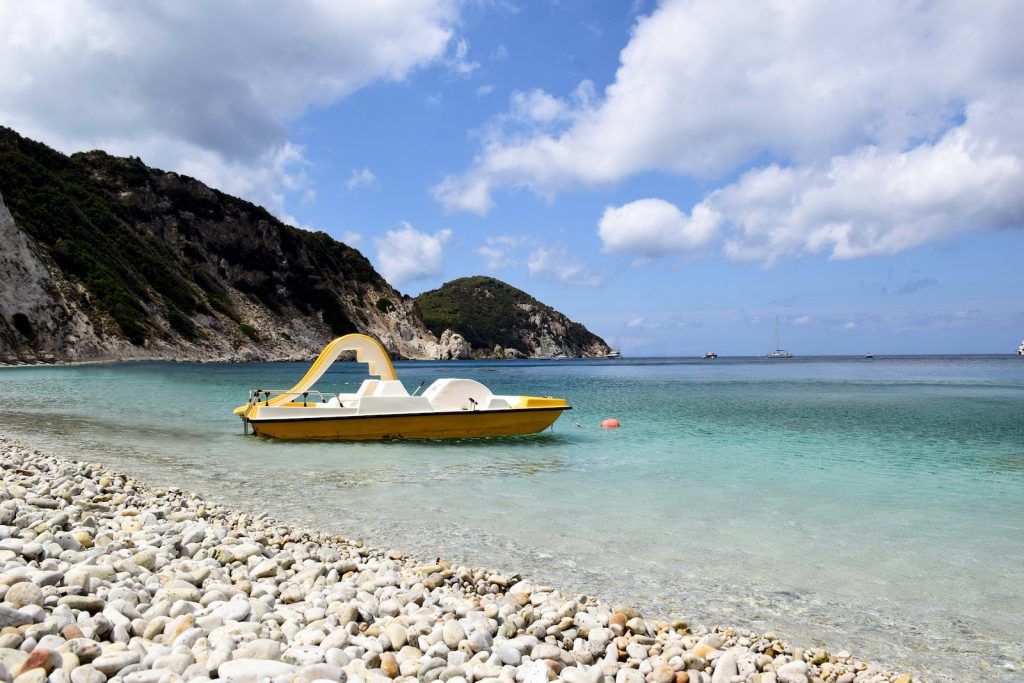
Beaches on the island of Elba
With so much coastline, Elba is understandably lauded for its beautiful beaches. From secluded coves with crystal waters to long sandy stretches perfect for seaside relaxation – beach lovers are spoiled for choice.
Popular options include La Biodola, a Blue Flag beach with white sand and turquoise sea located near Portoferraio. Its calm waters make it family-friendly while facilities like sun beds and water sports cater to visitors. The quiet pebbly beach of Sansone offers a peaceful escape surrounded by Mediterranean plants. And Enfola Beach charms with its crescent shape wedged dramatically between cliffs.
But the diversity of Elba’s beaches means serene spots can still be found. Seek out hidden gems like Acquarilli Bay, a picturesque rocky cove with an old Genoese tower as a backdrop. Or stumble upon the pristine sands of Sant’Andrea Bay, set beautifully beneath rolling hills. With so many options, you’re sure to find your perfect patch of paradise.
The beauty of Capo Sant’Andrea
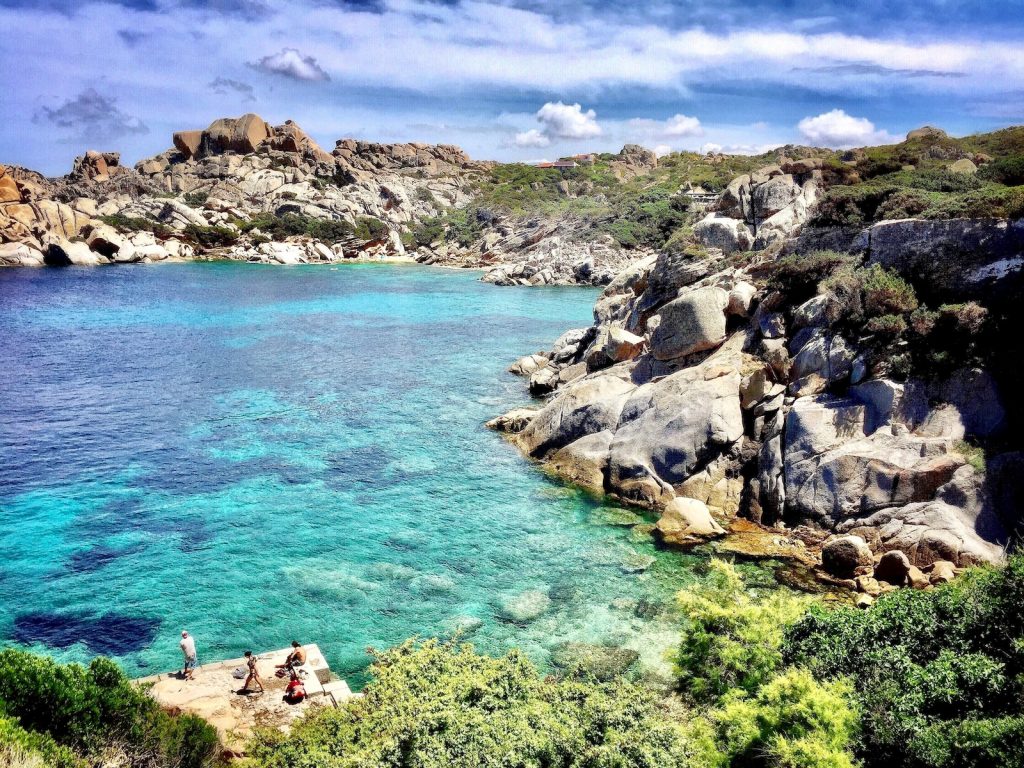
On the southeastern tip lies the rugged promontory of Capo Sant’Andrea. Jutting out into the sea, this coastline epitomizes the island’s raw natural splendor with soaring cliffs, secluded bays, and crystal water.
Hike along coastal trails to experience the windswept landscape firsthand. You’ll be rewarded with dramatic outlooks from cliffside vantage points. The bay of Sant’Andrea itself impresses with a crescent beach set against green hills – many rate it as one of Elba’s finest. Nearby grottoes like Grotta Azzurra and Grotta dei Colombi are popular spots for swimming, snorkeling and diving.
This corner of Elba encapsulates all the natural beauty and allure that shapes the island’s reputation. Rugged yet beautiful, it’s easy to see why visitors fall under Elba’s spell.
Discover Elba
Beyond the beaches, Elba wows with its diversity – coastlines give way to granite mountains and rolling hills dotted with vineyards. Much of the interior is designated as a National Park with an abundance of walking trails that thread through quiet villages, forests, and along mountain ridges.
Is Elba worth going to?
With its beautiful beaches, dramatic natural landscapes, fascinating history and relaxed island pace – Elba offers an idyllic Mediterranean escape that makes it absolutely worth a visit. It encapsulates the best of an Italian island destination – minus the crowds.
Historical Significance
Following Napoleone Bonaparte’s footsteps on Elba
History buffs flock to Elba to follow in the footsteps of its most legendary inhabitant – Napoleon Bonaparte. During his brief 300-day exile here in 1814, Napoleon certainly left his mark.
Top stops include his residences in Portoferraio like the 14th century Palazzina dei Mulini where he stayed and worked. Wander through the Emperor’s Apartments to view relics and learn of his time on the island. The Villa di San Martino, his country residence, also gives insight into Napoleon’s daily life complete with his library, billiards room and small church.
At his summer villa in Porto Azzurro, glimpse the minimalistic bedroom where he slept. While outdoor spots like the panoramic viewpoint on Mount Oricollo visits the very place the exiled leader admired his island domain. Walking these historic sites lets you vividly imagine Napoleon’s sojourn as the island’s governor.
The island of Tuscany
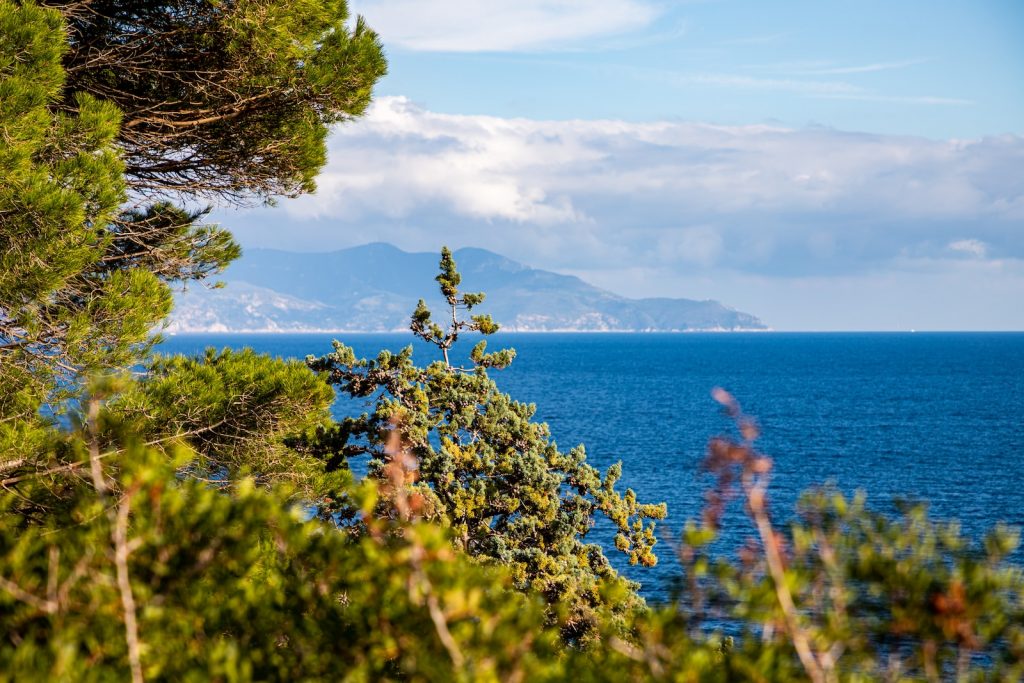
Lying just off the Tuscan coast, the island beautifully encapsulates the spirit, cuisine and charm of its neighboring region. Quaint seaside towns and villages with their picturesque piazzas transport you to rural Tuscany by the sea.
Signature Tuscan dishes also headline menus across the island. Indulge in handmade pasta, hearty ribollita soup, wild boar salami and island-produced olive oils and wines. Even Napoleon acquired a taste for Tuscany during his time here. The local wine Ansonica – said to be one of his favorites – is now marketed as “wine of the emperor’s exile”.
Beyond Italian cuisine, Elba’s Mediterranean climate nurtures palm trees, cacti, citrus groves and wild herbs. Their presence heightens that carefree island vibe. Linger coastal walks scented by rosemary bushes, then lunch beneath olive and fig trees – quintessential Tuscany meets island paradise.
Storia
Evidence suggests Elba has been inhabited since the Iron Age with its mineral resources exploited by the Etruscans and civilization flourishing under the Romans. Its coastal location also made it prone to invasion and pirate attacks in the following centuries.
By the 1500s Elba was annexed to the Grand Duchy of Tuscany who introduced defenses like the Medici Fortresses to protect the island. Its important salt and iron mining industries were also established at this time. Napoleon’s brief stint further shaped the island after his 1814 exile introduced reforms and development.
Remnants of this multi-layered past can be seen across Elba today – from Etruscan and Roman excavation sites to prominent medieval fortresses of later eras. This rich history only heightens the experience of discovering the island’s many charms.
Travel Guidance
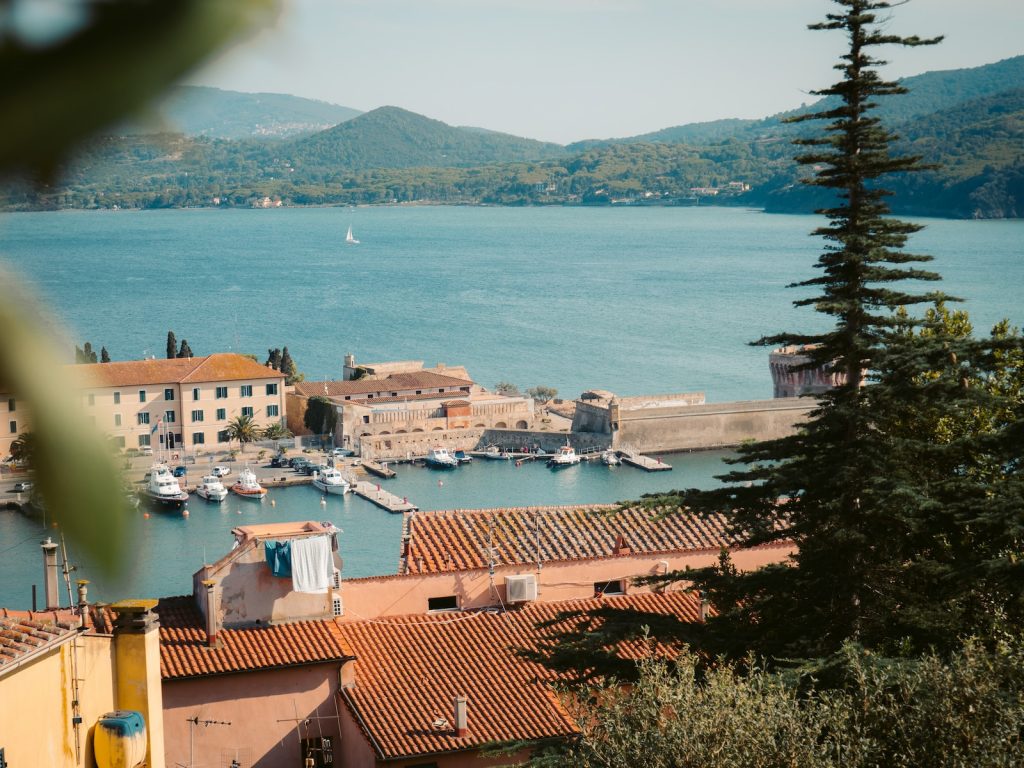
Transportation
By sea: Car ferries and fast hydrofoils connect Elba to the mainland port of Piombino with the journey taking 1 to 1 1⁄2 hours. Ferry services also link it to Porto Santo Stefano on the Tuscan coastline. Advance reservations are recommended during peak season.
By air: Daily flights operate between Elba to major Italian cities like Milan, Rome and Pisa – especially convenient for international travelers. Marina di Campo Airport is located on the south side of the island.
On the island: Given the mountainous terrain, scooters are a popular way for navigating the island. There is also a public bus system connecting main towns, but services are limited, especially on weekends. Taxis can fill the gaps or consider hiring a car for convenience.
Travel Guide About Elba Island
Elba island offers much natural beauty to discover beyond its famed beaches. Outdoor enthusiasts will relish exploring its network of hiking trails that unravel staggering coastal outlooks, quiet inland villages, granite peaks and even ancient ruins.
But history and food lovers need not feel left out. Napoleon’s legacy livens up architectural gems in coastal towns like Portoferraio. While Elba’s Tuscan spirit shines through in its simple, flavorful cuisine, charming seaside trattorias and passions for wine.
The island strikes an alluring balance of history, scenery and island pace. Blissful beach days can be followed by scenic coastal hikes or wine tasting sessions. Whether you seek adventure, culture or pure relaxation – Elba elegantly obliges.
Journey planning
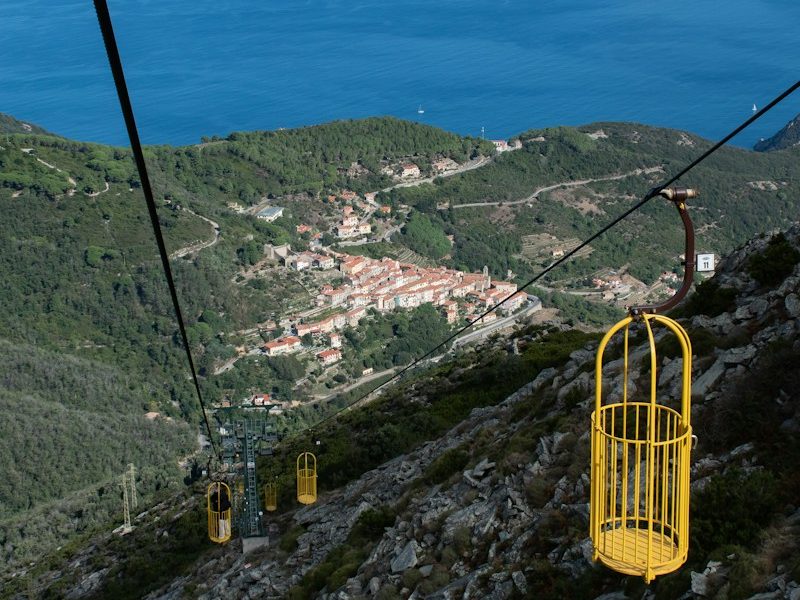
Elba’s size means key sites are reasonably close together for those short on time. Base yourself in a hub like Portoferraio to easily access nearby attractions. Having your own transport also aids spur-of-the-moment detours.
But don’t try squeezing the entire island into one trip either. Elba rewards those who take it slow by spending a few days in each locale. Explore lesser visited areas like Mount Capanne or the quaint mining town Rio Marina in the island’s east. Savoring Elba’s diverse offerings enhances that sublime island state of mind.
Related Search: How do you get to Elba island?
Visitors can reach Elba island by ferry or hydrofoil from the mainland port of Piombino, with the journey taking 1 to 1 1⁄2 hours. Car ferries operate regularly each day. Ferry services also connect Elba with Porto Santo Stefano further up the Tuscan coast. Flights from major Italian cities directly into Elba’s Marina di Campo Airport are another convenient option.
Languages
As part of Tuscany and Italy, Italian is predominantly spoken on Elba. English is also fairly well understood in tourist centers, shops and hotels catering to international visitors. Key signs, menus and information is often provided in both languages.
But don’t let language barriers deter you – the locals are friendly and welcoming. Learn a few handy Italian phrases and interact with good humor and patience. Let Elba’s lovely landscapes and relaxed island vibe speak for themselves!
Best Time to Visit
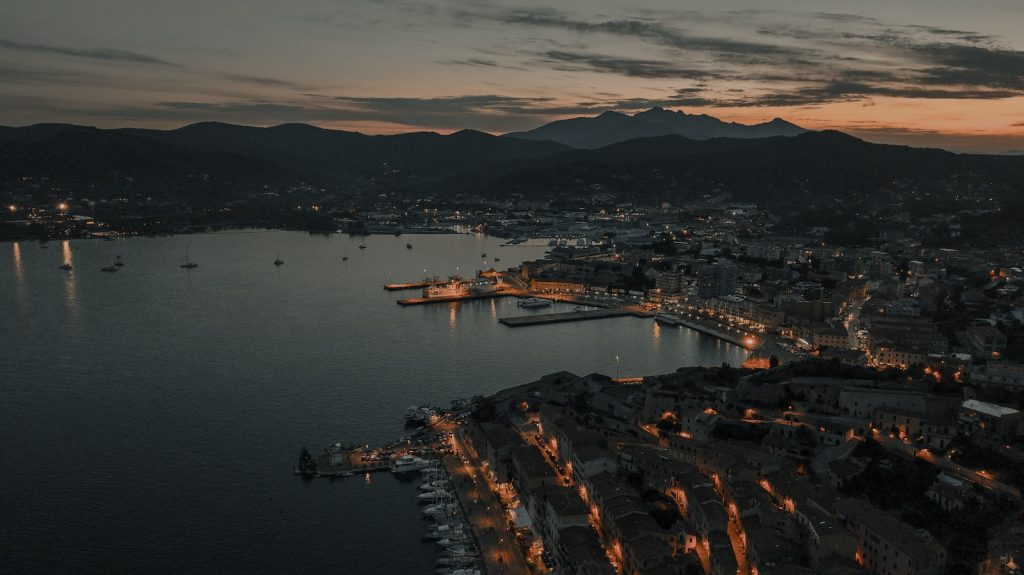
When to Go to Elba
Elba enjoys pleasant weather for most of the year making planning your visit fairly flexible. But the island does have distinct high and low seasons.
For the best weather and outdoor swimming, visit between May to September when temperatures average a comfortable mid 20°Cs. Beach scenes come alive during the summer months which is consequently also the busiest tourist period. Expect crowds and higher prices if planning a trip here.
If wanting to avoid throngs of fellow travelers, consider shoulder seasons in April-May or September-October. Temperatures remain mild – often still beach friendly while the island pace winds down after summer’s peak. Rates are also cheaper but some businesses may have reduced hours.
Winters are relatively mild but expect more rain and cooler temperatures averaging 10°C. Attractions and hotels reduce their operating schedules. But the island beauty remains with fewer tourists and lower costs – perfect for offbeat adventures.
Related Search: How far is Elba from mainland Italy?
The island of Elba lies just 10 km off the coast of Tuscany in western Italy. Regular car ferries cover the short distance from the mainland town of Piombino across to Portoferraio on Elba in approximately 60 to 90 minutes. Fast hydrofoils can also zip passengers across in closer to 45 minutes. So although an island escape, Elba remains conveniently close to reach.
Excursion and Activities
Things to Do on Elba
Beach bliss: Pick your patch of paradise to soak up some Mediterranean sun and sea. Top beaches span from family-friendly Biodola to remote Sant’Andrea Bay.
Water sports: Boating, sailing, sea kayaking, paddle boarding, windsurfing and diving around Elba’s scenic bays and coves. Calm beaches cater to beginner learning while exposed northern capes challenge experts riding winds and waves.
Hiking trails: Lace-up your walking shoes to explore Elba’s natural landscapes threaded by many scenic trails. Short routes meander along coastal cliffs while multiday treks summit granite peaks.
Cycling: Bikes make perfect island transport especially suited for touring the rural interior and its villages. Gentler coastal routes also available. Mountain biking options for off-road adventurers.
Cultural attractions: Napoleon’s residences in Portoferraio, Etruscan and Roman sites like Villa Romana delle Grotte, mineral museums and contemporary galleries to peruse.
Food and wine: Indulge in fresh seafood, classic Tuscan cuisine and island produced wine amidst vineyards, orchards and colorful local markets. An Eating Excursion!
Shop local: Browse weekly markets and small shops selling island bounty from coral jewellery using Elban stones to artisanal soaps infused with herbs.
Snorkeling in Elba
Thanks to very clear waters and diverse marine life, snorkeling is a popular activity for water lovers. Many beaches like Enfola offer equipment for hire but serious snorkelers should bring their own gear. Prime spots include the stunning Cavoli Island marine park, beach zones Fetovaia and Capo Bianco, and around the cliffs of Mount Capanne. Snorkel safaris by boat enable you to discover even more spectacular sites. With so much coastline, you’re guaranteed amazing underwater sights!
Accommodation on Elba
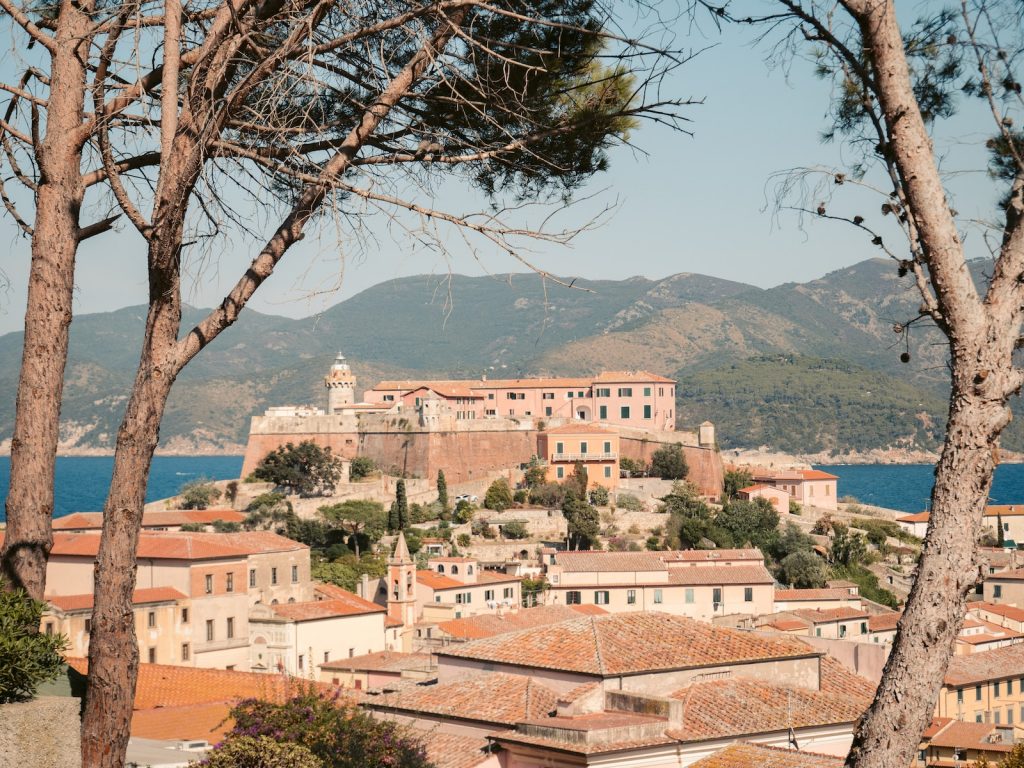
Elba Hotels
Elba offers varied accommodation from hotels ranging from luxury boutique to modest family-run pensions. Well-located options exist in every price bracket.
In the main tourist centers like Portoferraio and Marina di Campo, hotels span grand waterfront properties to budget city lodgings. Expect fullest amenities along with easy access to attractions. Quaint options at Straccoligno or Patresi nestle amidst charming villages. For sheer indulgence, properties like Hotel Hermitage offer exclusive suites, private beaches and sublime views.
Renting an apartment or villa also makes an attractive option for longer stays or larger groups wanting self-catering flexibility. These range from plush villas with pools to simple sea-view apartments. But plan early, especially for peak summer lodgings. Whether you seek facilities or charm, Elba has accommodation options for every style and budget.
Where to Stay on Elba Island
Portoferraio makes an excellent base with good transport links and attractions. Seafront hotels offer harbor views alongside amenities. Or rent an apartment in the Old Town for boutique charm.
Marina di Campo in the south has a popular family-friendly beach, waterfront hotels and easy airport access. Neighboring Cavoli and Seccheto beaches tempt with tiny coves.
Magazzini and Capoliveri provide great eastern bases with beaches, history and excellent walking access.
For pure relaxation choose accommodation amid the beaches and bays of Capo Sant’Andrea in the southeast or blissful Sant’Andrea and Stella Maris on the northern coastline. Let island life roll gently by.
Remote villas in the western interior invite total escapism amongst gorgeous countryside.
